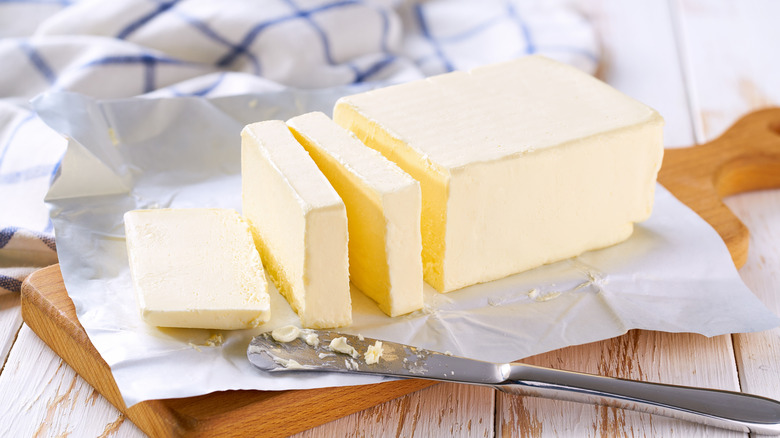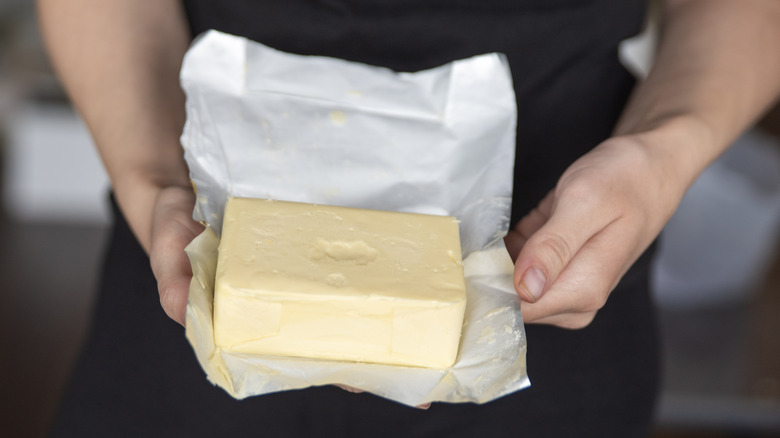Why Does European Butter Taste Different From American?
While navigating through all the store-bought butter brands at your local grocery store, you may stumble upon two distinct types: European butter encased in a metallic foil wrapper, or American butter (while not labeled as such, it is the standard butter you find in the United States that is commonly wrapped in parchment paper). To get to the bottom of how these two dairy products actually differ, Food Republic spoke to food and nutritional scientist Blessing Jennifer Anyibama, M.Sc.. According to the expert, the biggest thing that sets the flavors apart is the fat content.
"European butter is the velvet of the dairy world — higher in butterfat (82 to 85 percent) and often cultured, giving it a tangy, creamy depth," Anyibama shared. Conversely, "American butter clocks in around 80% fat, with more water and less richness." This difference in fat percentage comes into play regarding texture and taste. Anyibama explained, "European butter is silkier, richer, and yields flakier pastries and more luxurious sauces." It's also lightly cultured, unlike its American counterpart, creating a more pungent and rounded flavor profile. Colorwise, European is often more yellow-tinged due to the higher amount of butterfat while butter from the U.S. pales in comparison (literally).
Oddly enough, you can actually buy American-made brands – think Vermont Creamery and Plugra – that create the spread with high butterfat percentages, often dubbed "European-style" butter. While in theory it seems like the label should indicate butter made solely in Europe, it has evolved slightly for some makers, distinguishing butters with at least 82% fat content. The expert put it best: "It's not just butter — it's an upgrade."
When to use American versus European butter
Praised for its silky texture and deliciously rich mouthfeel, there are definitely times when using European-style butter is worth the splurge — but there are also moments where it's okay to skip. Blessing Jennifer Anyibama confirmed that your choice in butter does indeed matter, "especially in laminated doughs like croissants or puff pastry, where the extra fat creates dramatic layers." The European variety's higher fat content is perfect for baking, particularly in dishes where butter is the highlight of your dish, like a lush salted caramel spread or a batch of delicious homemade cookies. She explained, "It shines in shortbread, frostings, and sauces[,] too, lending depth and silkiness."
As for frying things, Anyibama gave the green light to "go American." For example, when making pancakes, eggs, classic potato latkes, steaks, or essentially any pan-fried food, there's no need to spend the extra money on European butter. Additionally, there's no added benefit for using butter with higher fat content when the ingredient isn't incorporated into the dish; instead, it is just a layer of fat for cooking. The takeaway? If butter is the star, reach for European (or European-style). If it's just another ingredient in your dish, American will do just fine.


